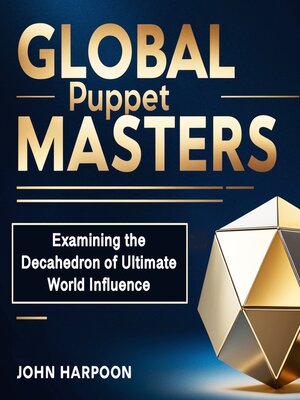Global Puppet Masters
audiobook (Unabridged) ∣ Examining the Decahedron of Ultimate World Influence
By John Harpoon

Sign up to save your library
With an OverDrive account, you can save your favorite libraries for at-a-glance information about availability. Find out more about OverDrive accounts.
Find this title in Libby, the library reading app by OverDrive.



Search for a digital library with this title
Title found at these libraries:
| Library Name | Distance |
|---|---|
| Loading... |
In the modern world, understanding the foundations of global influence is essential to comprehend how power operates on the world stage. Power, in this context, refers to the ability of an actor—be it a nation-state, corporation, or non-governmental organization—to shape outcomes and direct events. Global influence manifests through various mechanisms, from economic leverage to cultural dominance, from military might to technological advancement. These power structures are not static; they evolve and adapt, shifting with changing political landscapes, societal developments, and technological innovations. To better understand these complexities, it is vital to define and explore the different types of power that govern global interactions.
The concept of power can be categorized into three primary types: hard power, soft power, and smart power. Hard power is the use of force or coercion, such as military action or economic sanctions, to achieve a desired outcome. It is often associated with traditional methods of exerting influence. Soft power, on the other hand, involves shaping preferences and values through non-coercive means, such as diplomacy, cultural exports, or the appeal of ideologies. Smart power combines both hard and soft power, strategically applying each to achieve desired objectives in a rapidly changing world.
The Decahedron Model is introduced as a comprehensive framework for analyzing global influence. This model identifies ten pillars of power that work together to create a complex web of interconnected global forces. These pillars include political, economic, military, technological, media, cultural, environmental, psychological, strategic, and financial influence. The Decahedron's unique approach emphasizes that these pillars do not operate in isolation; rather, they interact and reinforce one another, creating a dynamic system where shifts in one pillar can lead to ripple effects throughout the entire global system.







